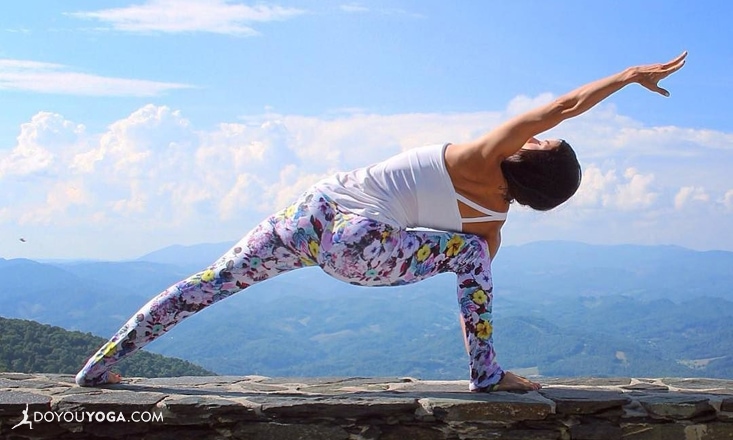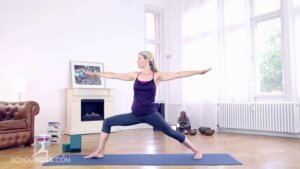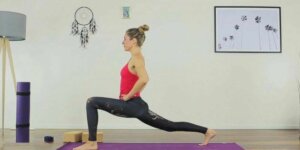As it is above, so it is below. Have you ever heard this term before? It actually fits for our anatomy. What happens above our body is often the result of misalignment below our body.
The more we can align at the base, closest to the floor, it ripples upwards to our heart and mind.
One of the main muscles that connects the upper and lower body is known as the Iliopsoas, often referred to as the Psoas. The psoas is the only muscle that connects the legs to the torso, through the pelvis.
What and Where Is It?
Technically, this muscle has a Major (thick and most often referenced) and Minor Psoas (smaller, thinner, doesn’t do as much) as well as the Iliacus which starts separately and ends with the Psoas Major.
Originating at the vertebrae in the lower back (T12 – L5), the Major moves through the pelvis and meets at the top of the inner thigh bone. The Iliacus starts at the inner top of the pelvic crest, moving through the pelvis to meet at the inner thigh bone with the Psoas.
The Minor muscle meets from the lower back (T12 – L1) and ends at the lower front of the pelvic bowl, near the pubic bone. When the Psoas is either too long or too short, it affects the position of the pelvis in relationships with the feet/legs and with the rib cage and upper body. Many of our problems stem from the misalignment of this very powerful muscle group.
The Psoas and the Pelvic Bowl
Imagine a bowl of your favorite food placed on a table. If the bowl tips too far forward, your favorite treats will spill forward out of the bowl and onto the floor. If the bowl is tipped backwards, the treats will tip out of the bowl to the back of the table and onto the floor.
Either way you tip it, the bowl empties and you loose your treats. A healthy psoas helps the pelvic bowl in our body remain upright, allowing us to keep our treats, (inner organs, huge network of nerves and proper blood supply) healthy and functioning smoothly.
When we tip it too far forward, spilling our treats forward, it can lead to a swayed and weakened lower back. The lower organs slow down and accumulate waste, puffing forward, leading to an increase in toxicity and weakening the lower back even more. This is a common case for many with lower back problems; the pressure is on the lower back instead of lifting out of it and distributing the challenge to other regions of the body.
When we tip too far backwards, spilling our treats backwards, it can lead to constriction of the lower organs and a flattening of the natural lower back curve. This leads to pressure on the nerves and not only causes other lower back difficulties, it can constrict the functioning of the digestive and eliminative systems.
There’s More to Tadasana Than You Think
 Credit: Anna Coventry
Credit: Anna CoventryMost beginner yoga classes teach Tadasana, which seems to be a simple standing posture until we start practicing it and realize the amount of work that may be required to simply stand straight.
It is important to learn how to stand in healthy alignment so that as we move into standing postures, backbends, forward folds and even inversions, we can keep that alignment, even though the perspective is different. Often called “placing the pelvis in Neutral Position,” direct your pubic bone and tail bone both towards the floor evenly when standing, neither lifting or descending more than the other.
For many yoga students, once we move into standing postures, the pelvis tends to tip in either direction, based on the students’ strengths and weaknesses. Some of us tilt the buttocks backwards, increasing the lumbar curve, which is spilling our treats forward towards the front of the body.
We see this a lot in Triangle Pose, all the Warrior Poses, and honestly, every pose possible. What is need is a lift from the inner abdominals to draw the front hip bones, (Anterior Superior Iliac Spine, ASIS) away from the thighs and back to Neutral. This lifting not only tones the abdominals, it also strengthens the psoas and helps it return to its proper length.
For students who are tight, especially in the hamstrings, the tilt of the pelvis is in the opposite direction, moving the buttocks towards the floor and lifting the groins towards the ceiling. This spills the treats towards the back of the body, indicating that the pelvis is tight.
It’s not necessarily strong, just really tight. It needs some elongating to allow space between the pelvis and the thighs. For this type of student, it is helpful to bend the knees a bit in forward folds and in straight-legged postures to help the lower back move towards its natural curve and release tightening of the lower organs.
How to Stretch and Strengthen Your Psoas
In order to be healthy, our psoas needs to be strong and flexible. Pending on your own uniqueness and lifestyle, you may need to emphasize one or the other to bring your muscle and your spine into balance.
Methods to Stretch and Elongate the Psoas
- Any pose that gives a stretch to the quadriceps, the front of the thighs. It is said that, “The quadriceps are the gateway to the psoas.” As you stretch the front of the thigh, lift the front hip bones upwards, away from the leg.
- Lunges of any sort with one leg flexed in front of the body and one extended behind. As this asymmetrical placement occurs, the body naturally wants to tilt the hips towards the back leg and the torso towards the front. We need to lift up out of the legs, drawing the back leg to the front and the front leg to the back, which will bring the torso and pelvis in alignment vertically with each other.
- Lay down on your back, extending your legs straight on the floor, taking the arms over your head, interlacing the fingers. Inhale naturally and then release a long exhale, dropping the belly to the floor and even lifting it up a bit into the body. By doing this, you might feel the stretch of this inner muscle, deep into the body.
- Elongate your inhale in all of these poses, and in general. As the diaphragm moves downward on inhale, it presses against the top of the psoas and gives it a nice stretch. When we add one of the aforementioned positions, it deepens the stretch. Thus, being still and deepening your breathing is not wasting time; you are doing deep inner work that can help free your spine and your perspective.
Methods to Strengthen the Psoas
Any posture that has leg(s) lifted, off the floor, in front of the body:
Navasana or Boat Pose is a great example. The challenge is that it’s usually the top quadriceps muscles that fire up instead of reaching deep into the psoas. This is because the thigh bone is moving towards the quads, pressing deeper into the hip socket.
We need to visualize the thigh bone and move it towards the back of the leg, the hamstrings. This makes space between the thigh bone and hip socket and leads to accessing the psoas.

Extending your exhale longer than your inhale in all of these poses deepens the contraction of the lower abdominals. As the exhale becomes longer, the lower abdominals begin to press against the psoas and that helps it engage even more.
Once you get a hang of it, you can start to bring awareness to all of the yoga poses. Backbends elongate the psoas wisely when we keep a lift of the frontal hip bones. Forward folds and abdominals actually strengthen the psoas when we send the thigh bones to the back of the leg and engage the abdominals.
With this awareness of your yoga anatomy, we can keep the psoas aligned in twists, inversions and simply sitting upright for pranayama and meditation. The healthier this juicy muscle is in our body, the more enjoyable our whole practice becomes!
Image credit: Odette Hughes




